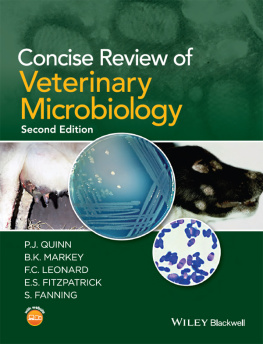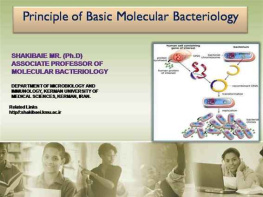
Also by CHARLES DEPAOLO
AND FROM MCFARLAND
Pandemic Influenza in Fiction: A Critical Study (2014)
The Ethnography of Charles Darwin: A Study of His Writings on Aboriginal Peoples (2010)
Epidemic Disease and Human Understanding: A Historical Analysis of Scientific and Other Writings (2006)
Human Prehistory in Fiction (2003)
William Watson Cheyne and the Advancement of Bacteriology
Charles DePaolo

McFarland & Company, Inc., Publishers
Jefferson, North Carolina
LIBRARY OF CONGRESS CATALOGUING DATA ARE AVAILABLE
BRITISH LIBRARY CATALOGUING DATA ARE AVAILABLE
e-ISBN: 978-1-4766-2641-3
2016 Charles DePaolo. All rights reserved
No part of this book may be reproduced or transmitted in any form or by any means, electronic or mechanical, including photocopying or recording, or by any information storage and retrieval system, without permission in writing from the publisher.
Front cover image of Sir William Watson Cheyne Photograph by Elliott & Fry (Wellcome Library, London); petri dish 2016 Rudi Gobbo/iStock
McFarland & Company, Inc., Publishers
Box 611, Jefferson, North Carolina 28640
www.mcfarlandpub.com
To Andrea, Victoria and Patrick
Acknowledgments
An earlier version of chapter 1 appeared in The Victorian Web: Literature, History, and Culture in the Age of Victoria, http://www.victorianweb.org, as Paster and Lister: A Chronicle of Scientific Influence. I would like to thank Dr. George P. Landow, Editor-in-Chief and Webmaster, for his constructive criticism and editorial attention. To the anonymous reviewers of this book who offered indispensable advice and correction, I extend my gratitude. My colleagues at Borough of Manhattan Community College, City University of New York, offered support and votes of confidence. Through the Faculty Publications Program, sponsored by the College, I received a reduced teaching schedule for the Spring 2016 semester, providing me with time to complete the project. Professor Dorothea J. Coiffe-Chin, Faculty Research and Scholarly Communications Librarian, expedited my requests for documents that were difficult to find and essential to the research. For having advocated my work through the years and before College Personnel and Budget Committees, I owe a debt to Dr. Joyce Harte, Professor and Chairperson, Department of Writing and Literature, to Dr. Robert M. Zweig, Professor of English, and to Dr. Erwin J. Wong, Dean of Instruction. I wish also to thank Dr. Antonio Prez, President of the College, for supporting traditional research, and especially for recognizing its importance in the professional lives of senior faculty. Finally, without the patience and technological expertise of my wife, Andrea, the manuscript would still be on my desk.
Introduction
Sir William Watson Cheyne (18521932), a surgeon by training, has been called one of the most prominent bacteriologists in England (Bulloch, History: 358). In addition to publications on surgery, he produced more than 60 papers and 13 monographs, from 1879 to 1927, either entirely or in part on medical bacteriology. The large number of writings and the complexity of his thought in this area warrant a sustained reading. Michael Worboys is correct to say that Cheynes work, along with that of his contemporaries, deserves to be better known and understood (Spreading Germs: 15). The objectives, arrangement, and content of this book are delineated below.
Historical Perspectives: 1889 and 1897
The object of this study is threefold: (1) to characterize the complex development of emergent bacteriology (a term coined in 1884) through a survey of primary texts; (2) against this intellectual background, to describe Cheynes professional activities as laboratory investigator; as clinician and surgeon; as translator, editor, biographer, international liaison, and educator; and (3) to emphasize Cheynes idea of medicine and microbiology (a term coined in 1888) as interdependent branches of science (bacteriology, OED. I:155; microbiology, OED. I:1788).
Keenly aware of the rapid development of laboratory science and of its implications for health care, Cheyne periodized his milieu into five stages, identifying each with a representative figure(s) whose contribution or Landmark was a turning point in the history of medical bacteriology. Constructed according to preconceived ideas, periodic history often displays a pattern of phasic development, a prevailing intellectual, cultural, or moral state, and prominent individuals who are believed to embody its ethos (R. G. Collingwood: 264; R. Stover: 280; D. Gerhard: 476). All periodical historians, no matter what the doctrinal or intellectual orientation, organize historical time into discernible and meaningful patterns (C. DePaolo, Periodization: 447).
As a surveyor and periodic historian, Cheyne efficiently employed chronology, phasic development, the representative figure, and the Landmark metaphor to convey his understanding of medical bacteriology as an emergent discipline. I have adopted his periodization scheme as the organizing principle of this study primarily to preserve his perspective and secondarily to provide the presentation with chronological unity, intellectual depth, and topical coherence. I have also made two adjustments: the first to integrate at Landmark I the complementary research of Pasteur and Lister, and the second to designate Cheynes contribution, five chapters in all, as representative of Landmark VI.
Cheyne outlined the recent history of biomedical discovery briefly in his Preface to the 1889 Suppuration and Septic Diseases and in an 1897 paper on pathology. He suggested, in the 1889 Preface, that a review of scientific knowledge, from the recent past to the present, would make it possible to realise what we have gained, what are the points which most urgently require elucidation, and what direction future investigations should take (vi). The great scientific achievements of the medical microbiologists of his time were the results of the individual initiative and the collaborative work of those who founded the new discipline. The retrospective scheme of 1889 begins with Listers bacteriology in the 1870s: The first landmark of importance to our present views on this matter is the first papers by Sir Joseph Lister on Antiseptic Surgery (vi). Cheynes scope at Landmark I encompasses the period from 1867 to 1889, the years at Edinburgh, Glasgow, and London, when Lister produced 23 papers on antiseptic surgery, six on bacteriology, and practiced medicine and surgery. I have paired Lister with Pasteur at this Landmark to describe the interactivities of biochemistry and medicine in an age when the two disciplines were considered independent of one another.
Three achievements qualified Alexander Ogstons (18441929) research as the second great landmark (Preface: ix). Indebted to the findings of German researchers such as Theodor Billroth (18291894), Frederich D. von Recklinghausen (18331910), and Theodore Albrecht Klebs (18341913), Ogston elucidated the relation between micrococci and suppuration in abscess pathology, described two types of cocci (Staphylococcus and Streptococcus), and concluded that cocci caused abscesses and other infections (ix-x).
Cheyne affixed the third landmark to the work of A. J. F. Rosenbach (18421923), whose 1884 publication on the infectious diseases of wounds still forms the chief basis of our present knowledge of the subject (Preface: x). Cheyne recognized the significance of Rosenbachs contribution: not only had he identified varieties of pyogenic organisms, but he had also studied their characteristics and the diseases associated with them (Preface: x).
Next page
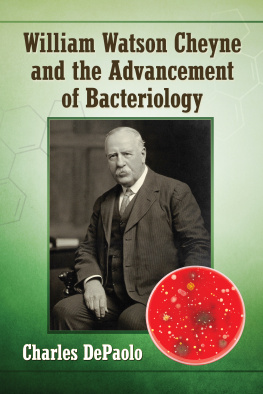

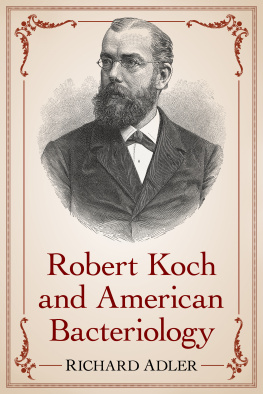
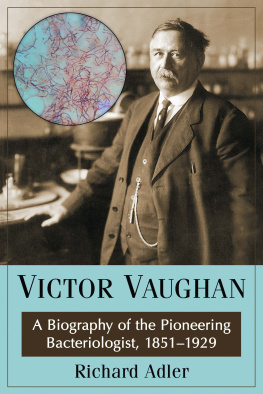
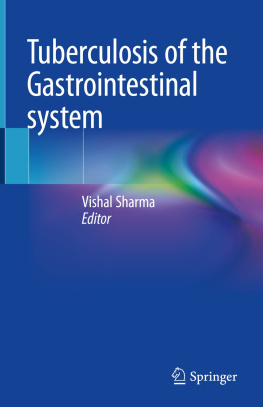
![William Henry Lowe Watson - A Company Of Tanks [Illustrated Edition]](/uploads/posts/book/291202/thumbs/william-henry-lowe-watson-a-company-of-tanks.jpg)

